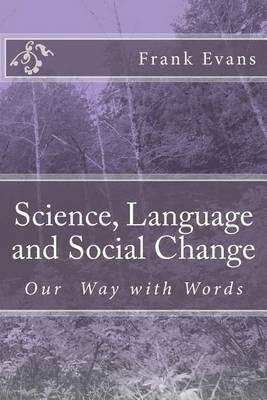Overview
Words are the currency of culture. They endow us with self-awareness, they make us laugh, they make us cry, they enable us to establish our values, and they even distinguish art from science. They enable us to distinguish the past from the future Language permeates all the crevices of our social life, and yet we take so much about it for granted. This book takes a new look at the way we use language, and how it impinges on every aspect of life by looking more at some common aspects of the readers' experience, avoiding where possible the more traditional academic approaches. Man is one of the most recent species to arrive on earth, but in our fairly brief history there have already been two really significant points of change, and they can both be associated to language. The first, when it arrived, and subsequently diversified into thousands of different dialects; there are still about 6,500 active languages on earth. Secondly when, only 400 years ago, we began to use language in a new way, and science was born. Incredibly every human child learns, with comparative ease, to learn any one (sometimes more) of these languages in an amazingly small window of early childhood. Modern human culture began about 4 -500 years ago in Western Europe, and despite it being clearly an outcome of the Scientific Revolution, seldom is the question posed about what triggered this to suddenly occur, when all richness and variety of the great early civilisations of Egypt, Mesopotamia, Greece and Rome had faded. Science began to use language in a new way, and this set in motion a chain of events that, today, makes even understanding the life style of one's own grandchildren difficult. This rate of change must, by its nature, be exponential, so questions of its ultimate sustainability inevitably arise. The dinosaurs lived on earth for over 100 M years and left it much the same as it was when they arrived. That will never be said about us. Interestingly, human intellectual life is now seen to be divided into two quite distinct activities; broadly what have become known as 'art' and 'science'. There is much evidence showing how they still ppear to be in quite aggressive antagonism. The Two Culture concept proposed by C.P. Snow about 50 years ago is still valid, and there are questions he raised that still remain unresolved, as frequent published work clearly shows. The ultimate questions that we have to pose are concerned with the a tool for augmenting our ability to think that language provides; the modern electronic computer, at the centre of what has become known as 'artificial intelligence'. Clearly, science is now defining the boundaries of our culture, but in so doing it brings an element of complexity that largely remains hidden, until some system stops working properly. Global communication can be applied in anti-social ways, politically and economically, and life destroying tragedies can occur if excessive trust is assumed. How can human wisdom and caution be embedded into a machine, if we, ourselves are not infallible?
Full Product Details
Author: Dr Frank Evans
Publisher: Createspace
Imprint: Createspace
Dimensions:
Width: 15.20cm
, Height: 1.20cm
, Length: 22.90cm
Weight: 0.313kg
ISBN: 9781506191072
ISBN 10: 150619107
Pages: 230
Publication Date: 20 January 2015
Audience:
General/trade
,
General
Format: Paperback
Publisher's Status: Active
Availability: Available To Order

We have confirmation that this item is in stock with the supplier. It will be ordered in for you and dispatched immediately.
Author Information
After National Service, as a Radio Mechanic in the Middle East, Frank Evans became a school teacher for six years before turning to industry and the then burgeoning discipline of automatic control. Ten years later after working in the areas of automatic control for aircraft and power stations, he was invited to join Queen Mary University of London where he spent the next 20 years teaching and conducting theoretical research in control theory. He was awarded his Ph.D. and eventually a D.Sc. Degree for his work and became a Reader Emeritus of the University of London. During this time, and after, he was invited to act as Visiting Professor at several Universities here and in Europe, an acted as consultant to certain industrial organisations. He was later invited to become Professor and Director of the Control Systems Centre at the University of the South Bank, London where he became its first Professor Emeritus on retirement . His life-long interest in painting then developed into a very modest success; as a 'Sunday painter' exhibiting in several commercial galleries, including two one-man shows, and this also encouraged him to think about the art-science dichotomy From a long association with the University of London Extra-Mural Department he developed courses concerned with popular scientific and cultural concepts from which this book eventually developed, and also an earlier intermediate web-site. From this varied life-time experience the contents of this book have come.




